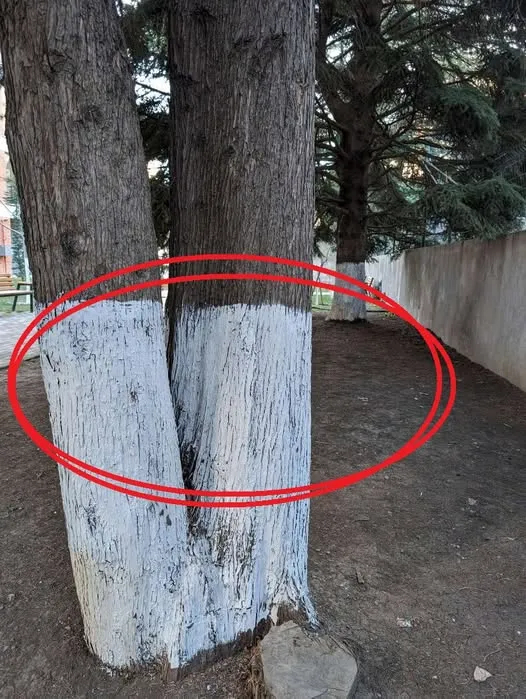If you’ve ever walked past a line of trees with their trunks painted white and wondered what message they were sending, you’re not alone. Many people assume it’s a code for property owners, a warning for workers, or some kind of marking for landscapers. But unlike orange dots that signal a tree is scheduled for removal or purple stripes that warn trespassers away, white paint has a completely different purpose. It isn’t meant to label, threaten, or direct—its job is to quietly protect.
During winter, trees face a unique threat known as sunscald. Even on cold days, sunlight can warm one side of a trunk enough to make the bark soften and expand. When temperatures plunge again at sunset, that warmed bark contracts too quickly, and the stress can cause cracks or long vertical splits. These injuries weaken the tree, create openings for pests and disease, and leave it struggling for years afterward. Young trees and thin-barked species are particularly vulnerable, especially those planted in wide open spaces.
That’s why a simple coat of white paint makes such a powerful difference. Because white reflects sunlight instead of absorbing it, the trunk doesn’t heat up as much during the day. By keeping the bark at a steadier temperature, the paint prevents the dramatic expansion-and-contraction cycle that leads to damage. It works like sunscreen for trees—shielding their most delicate, exposed surface from the harshest parts of winter. No electricity, no equipment, just an old-fashioned trick that has stood the test of time.
So the next time you see a tree with a bright white trunk, you’ll know it isn’t just a quirky decorating choice. It’s a sign of care, a small act of protection meant to help the tree survive the coldest months with its bark intact. In a world full of high-tech solutions, this simple, low-cost method still proves that sometimes the oldest tricks remain the smartest.
